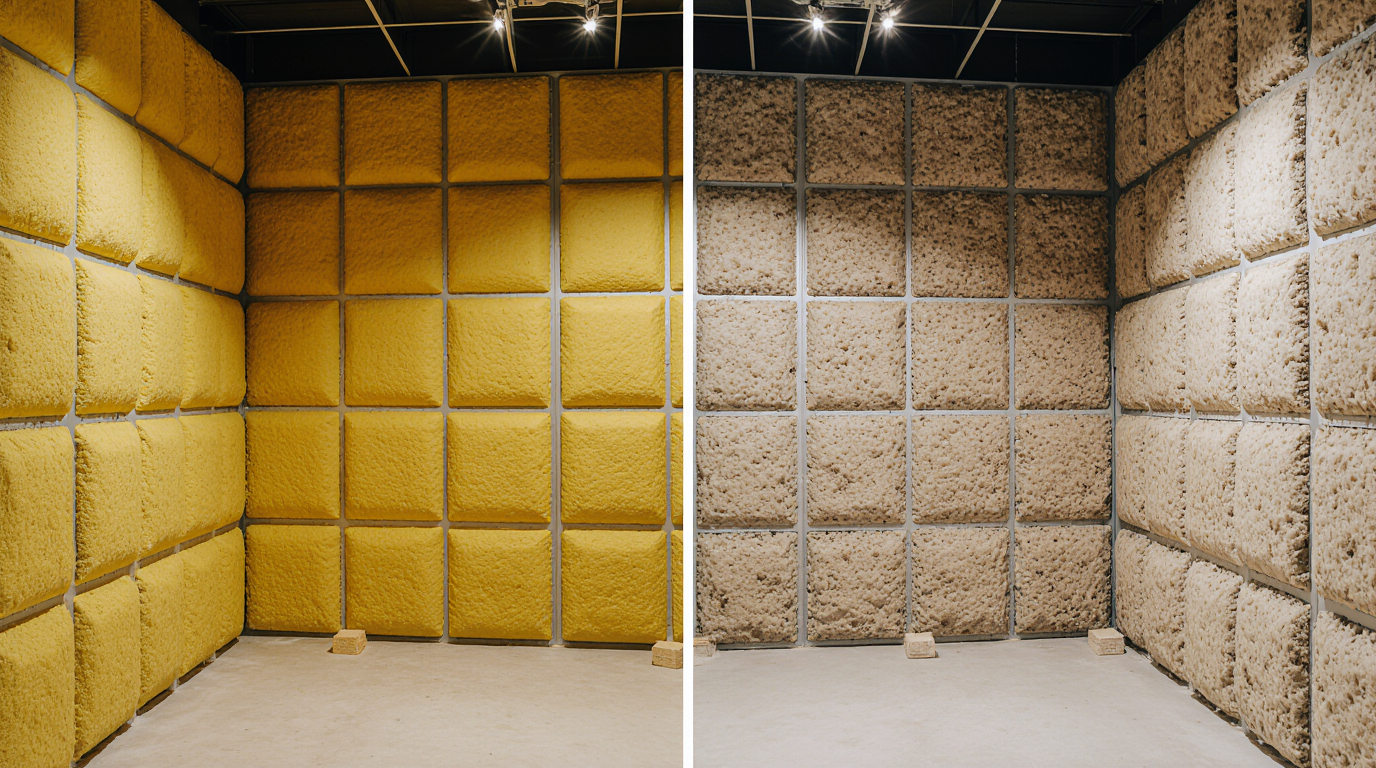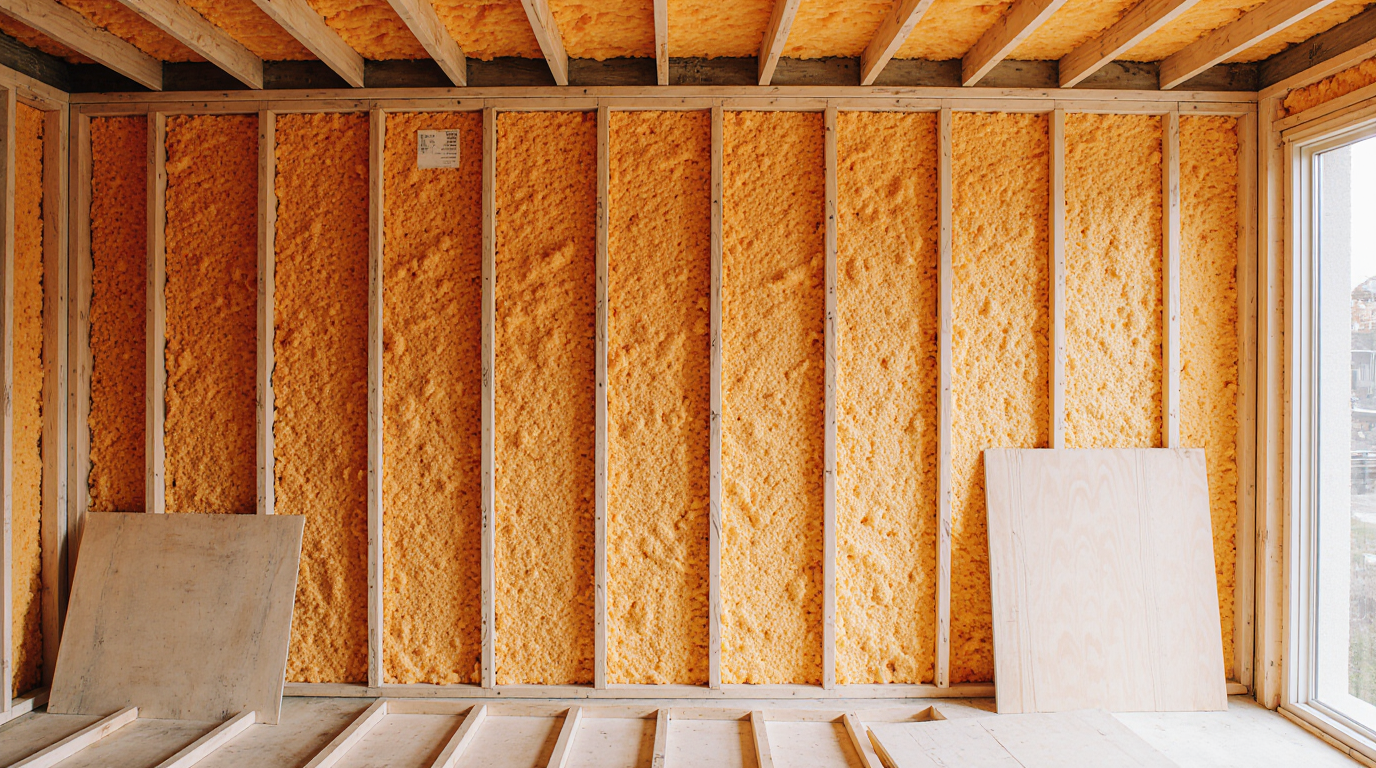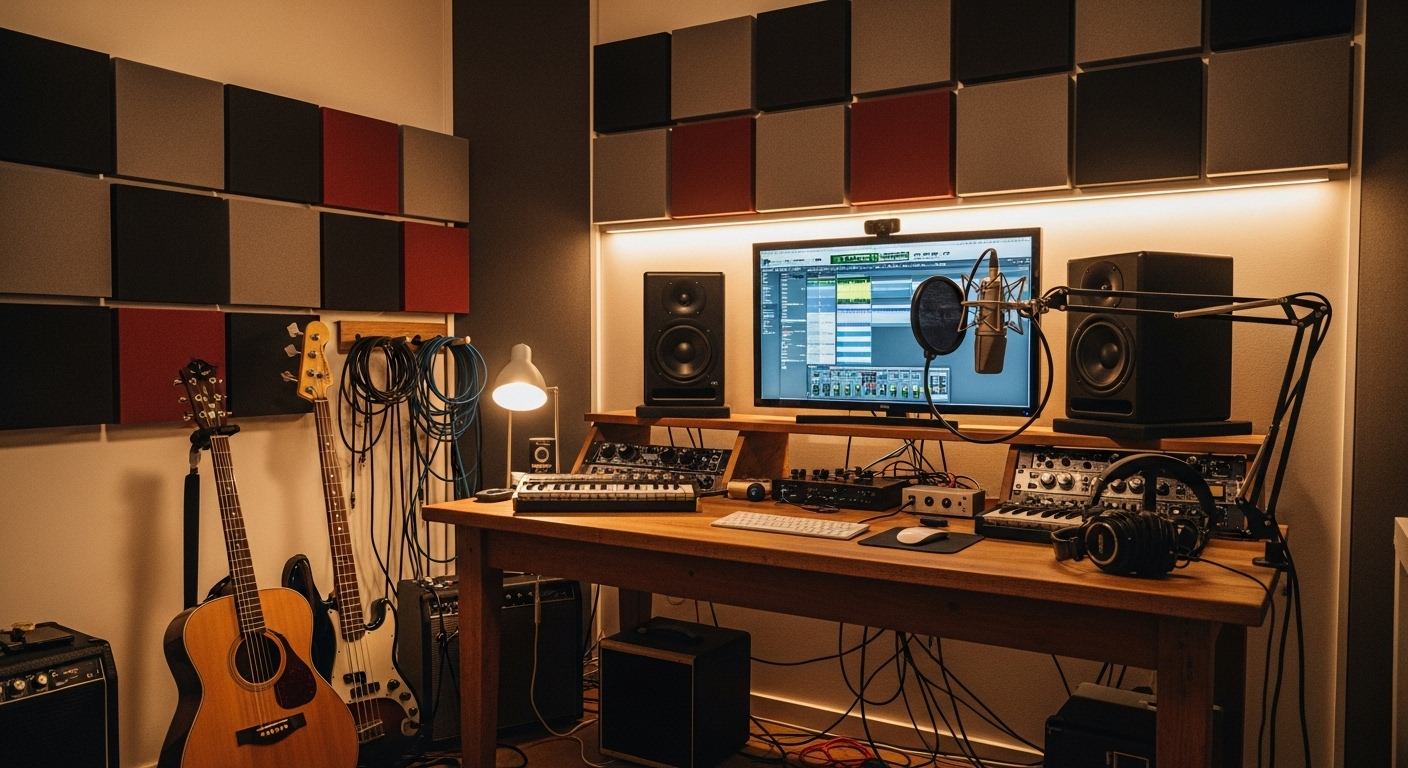
Soundproofing your space isn’t just about cutting down noise—it’s about improving comfort, focus, and privacy. Whether you’re setting up a home studio, office, or theater, choosing the right material makes all the difference. At Sound Pro Solutions, we help people create quieter, better-sounding environments every day. And one of the biggest debates we see is acoustic foam vs rockwool.
Both are popular choices for managing noise and echo, but they work in very different ways. Let’s take a closer look at what makes each material unique and when it makes sense to use one over the other.
Understanding the Two Most Popular Soundproofing Materials
There’s a reason acoustic foam and rockwool for soundproofing show up in almost every project discussion. They’re affordable, effective, and widely available. But while they may seem interchangeable, their structure, performance, and purpose differ significantly.
Let’s break it down.
What Makes Acoustic Foam Different
Acoustic foam is the material you’ve probably seen lining studio walls or podcast booths—it’s lightweight, flexible, and usually comes in egg-crate or wedge shapes. Its main job is sound absorption, not blocking. That means it helps reduce echo and reverberation inside a room rather than stopping outside noise from getting in.
Made from open-cell polyurethane or melamine, acoustic foam works by allowing sound waves to enter and lose energy through friction. It’s great for improving sound clarity, especially in small rooms or areas where you record, mix, or practice instruments.
The downside? Foam isn’t dense enough to stop low-frequency sounds or impact noise from traveling through walls. So if you’re trying to keep out loud neighbors or isolate a home theater, acoustic foam alone won’t cut it.
What Is Rockwool and How Does It Work
Rockwool, also known as mineral wool, is made from spun volcanic rock fibers. It’s denser, heavier, and more rigid than foam, giving it impressive sound-blocking and sound-absorbing qualities. When used inside walls, ceilings, or floors, it can significantly reduce sound transmission between rooms.
Because of its dense fibrous structure, rockwool traps both airborne and impact noise—something foam can’t do as effectively. It’s also thermally insulating and fire-resistant, which makes it a popular choice not just for studios but also for homes and commercial buildings looking for long-term acoustic control.
Is Rockwool Good for Soundproofing?

The short answer: yes. But let’s get into why.
When people ask, is rockwool good for soundproofing? We usually explain that it’s not a miracle product, but it’s one of the most efficient materials you can use in walls and ceilings. It’s all about physics. Sound travels through vibrations, and rockwool’s density resists those vibrations while its porous structure dissipates sound energy inside the fibers.
That dual action—blocking and absorbing—makes it far more effective than lightweight foams when it comes to keeping noise contained.
How Rockwool Blocks and Absorbs Sound
When installed behind drywall or ceiling panels, rockwool soundproofing creates a mass-spring barrier. The dense material slows down airborne noise like voices or TV sounds while absorbing mid and high frequencies to prevent reflection.
This combination helps control both transmission loss (how much sound passes through a structure) and reverberation (how much sound bounces inside a room). The result is a quieter, cleaner acoustic environment that feels naturally insulated.
If you’re building a recording studio, music room, or even a shared office, rockwool insulation for soundproofing adds a noticeable difference in comfort and privacy.
Real-World Performance in Different Applications
In real-world projects, rockwool for soundproofing proves its value across a range of settings. In residential homes, it helps reduce noise between bedrooms, bathrooms, and living spaces. In offices, it cuts down on echo and cross-talk between meeting rooms.
For studios or rehearsal rooms, it provides both absorption and isolation, improving recording quality and keeping sound contained. And since rockwool maintains its density over time, it doesn’t sag or degrade the way foam panels sometimes do.
That’s why professionals often combine it with resilient channels, acoustic sealant, or additional drywall layers for top-tier sound control.
Rockwool vs Acoustic Foam – Breaking Down the Key Differences
Now comes the main question: rockwool vs acoustic foam, which one should you actually use? The answer depends on your goals, budget, and space type. Let’s look at how they stack up in key categories.
Sound Absorption Performance Comparison
Acoustic foam shines in mid to high frequencies, taming echoes and flutter in untreated rooms. It’s ideal when you want better sound clarity inside a space, like a podcast studio or vocal booth.
Rockwool, on the other hand, performs across a broader frequency range, including bass and low-end noise. Because of its density, it absorbs deeper frequencies that foam simply can’t touch.
In other words, foam improves the quality of sound inside the room, while rockwool helps you control the sound coming in and out of it.
Installation Requirements and Ease of Use
Foam panels win in simplicity. You can peel and stick them to almost any wall, and they start working immediately. But they’re also surface treatments—they don’t provide isolation or structural soundproofing.
Rockwool takes more work. It needs to be installed inside wall cavities or ceilings, often during construction or renovation. But once it’s in, it’s permanent, effective, and hidden from view.
At Sound Pro Solutions, we often tell clients: if you’re looking for a quick fix, foam’s your friend. If you’re building something meant to last, rockwool is the smarter investment.
Cost Analysis and Long-Term Value
When comparing rockwool vs acoustic foam, cost is often the first factor people notice—but it shouldn’t be the only one. Acoustic foam is cheaper upfront. You can cover a small room with panels for a few hundred dollars, and installation takes just an afternoon.
Rockwool costs more initially, mostly because it’s denser, heavier, and requires a bit of construction work. However, once installed, it lasts decades without losing its acoustic properties. Foam, by contrast, can degrade, crumble, or discolor over time—especially in humid spaces or rooms with temperature swings.
From a long-term perspective, rockwool for soundproofing offers better value. It adds both acoustic and thermal insulation, potentially lowering energy costs. And since it’s hidden within walls, you never need to replace or clean it. Foam may look appealing on day one, but rockwool continues to perform year after year.
Fire Resistance and Safety Considerations
Another key difference is fire safety. Rockwool insulation for soundproofing is naturally non-combustible—it can withstand temperatures over 1000°C (about 1800°F). This makes it an ideal choice for residential and commercial projects where safety codes matter.
Acoustic foam, depending on its type, can vary. Some high-end options are fire-rated, but many inexpensive foams can burn or melt when exposed to heat. That’s why we always recommend checking fire ratings before buying acoustic panels.
If you’re building a studio or home theater with lighting or electronics, rockwool offers extra peace of mind. Safety should never be an afterthought when planning a soundproofing project.
Rockwool Insulation for Soundproofing in Walls and Ceilings
One of the most effective ways to use rockwool for soundproofing is inside walls and ceilings. It’s not something you see every day—but you’ll definitely feel the difference once it’s there.
When installed between studs or joists, rockwool insulation for soundproofing traps airborne noise before it can pass through drywall. In multi-story homes, it helps reduce footstep noise between floors. In apartment buildings, it keeps living spaces quieter and more private.
For home theaters, office meeting rooms, or even bedrooms near noisy streets, rockwool acts as a dense, sound-dampening core that complements other soundproofing layers like mass-loaded vinyl or acoustic drywall.
At Sound Pro Solutions, we often recommend combining rockwool with resilient channels and acoustic sealants. This multi-layered approach isolates sound vibrations and prevents them from transferring through structural elements like studs and beams. The result is a truly quiet, well-balanced acoustic environment.
When Acoustic Foam Makes More Sense Than Rockwool

Even though rockwool is powerful, there are plenty of cases where acoustic foam is the right choice. It all depends on what you’re trying to achieve.
If your goal is to reduce echo and reverb inside a room—not block noise from outside—foam panels are unbeatable. They’re perfect for home studios, vocal booths, podcast setups, or gaming spaces. Acoustic foam smooths out reflections and makes recordings cleaner without major renovation work.
Foam also gives you flexibility. You can move or rearrange it as your setup changes. For example, if you’re renting or can’t open up walls, foam is a non-permanent and reversible option.
However, it’s important to remember that acoustic foam vs rockwool isn’t a matter of better or worse—it’s a matter of purpose. Foam controls reflections inside the room; rockwool controls sound transmission between rooms. The best soundproofing designs often use both.
Getting Started With Your Soundproofing Project
Every project starts with one simple question: what kind of noise problem are you trying to solve?
If you’re dealing with echo, flutter, or poor sound clarity, acoustic foam is a great start. It’s budget-friendly and gives immediate improvement. But if you’re struggling with noise bleeding through walls or ceilings, rockwool soundproofing is your best bet.
At Sound Pro Solutions, we supply high-quality acoustic materials trusted by studios, builders, and homeowners across the country. Our products are carefully tested to deliver reliable performance, easy installation, and lasting results.
We also stand behind every order with clear shipping and return policies. Orders are typically processed within one business day, and we ship throughout the United States. If something isn’t right, our return policy ensures you get fast support and resolution—no complicated steps, no hidden fees.
Whether you’re renovating a studio, upgrading a conference room, or soundproofing your home, we’re here to help you make smart, lasting choices.
Explore our full range of acoustic materials at soundprosolutions.com and take the first step toward a quieter, better-sounding space today.
Recent posts




